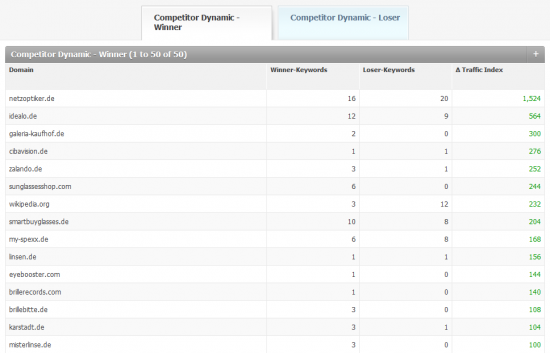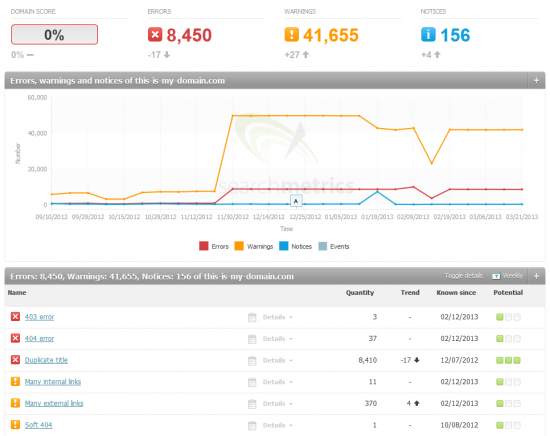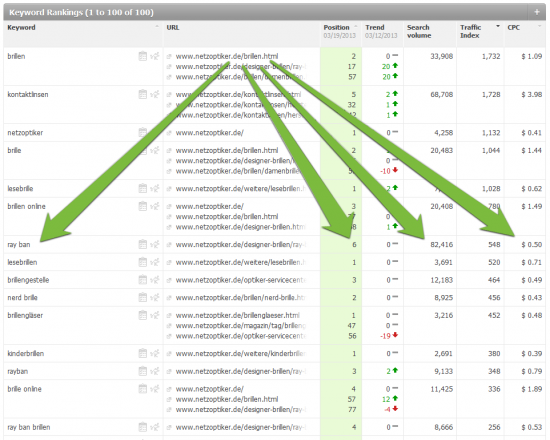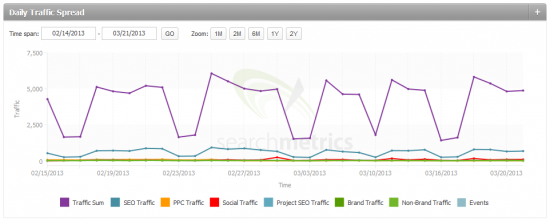In the series of articles entitled “Big Data in SEO”, I go through the seven topics that are important for enterprise SEOs. In this second part – Quick overview: managing different campaigns in a structured way – I show how you can organize your team with the Searchmetrics Suite.
Large companies naturally always pursue many objectives at the same time. Sometimes it is difficult to keep an overview of all the activities. The Searchmetrics Suite can help you with this for nearly all online marketing goals, and is a tool for the daily office work.
“Big data” of course always means there is the danger of complexity. If a sales employee, a marketing employee and an engineer are digging around in the same data pool, they could come up with entirely different results. This is not due to the consistency of the data but rather the various queries posed by the coworkers. Every one of them asks the right questions for their department. Our task is to respond to these queries reasonably and understandably.
However, the magic here lies in the setup of the Suite – putting some thoughts in the set ups will help you get significantly more out of the data. But I’ll get to that later.
Data for sales, marketing, and engineering
First, the dashboards can be assigned in the Suite to the various stakeholders:
Sales: The salespeople at the company want to occupy themselves primarily with the ranking of money keywords. They will happy track which keywords “draw” and where you can still readjust. The competitive situation may not be important to every salesperson. In which keywords does the competition invest, and who is new to our market?

Marketing: How much range do we have – and how much could it be? For online marketers, the Suite offers the most data – e.g., the visibility that exists similarly in multiple versions. This goes over all the backlink data with its sophisticated metrics. And of course the traffic: If the Suite is connected with the web analytics, is a quick glimpse sufficient in order to keep all traffic channels is sight (see image):
Technology: In online marketing, technology plays an increasingly greater role. Our Optimizer helps to quickly and transparently give an overview of the worst errors and opportunities for improvement, even for large sites. This goes along with a historical view of the trend with very detailed error specifications to prioritize the necessary tasks. Since recently, this is also accompanied by a task system in which the respective tasks can be managed in the technical back end.

For every recipient and every occasion: Set up dashboards
The dashboards are very clear and self-explanatory. It is not even necessary for the employees from all departments to get their data manually out of the software. 
The reporting module in the Suite helps to keep even remote employees up-to-date on the latest informations, with dashboards and reports that can easily be administered. An example is shown here to the right.
Every KPI, chart or data table in the Suite and in the Essentials can be assigned to a target group dashboard and subscribed to. This way the general manager can be given a summary of KPIs, while the head of sales can find more detailed data from the keyword set and the competitors on the digital table once a week. Such a dashboard offers the opportunity to supply everyone with quick overview of what they need for their work.
Working with specific keywords: tagging and categorizing
Back to the requirements – I mentioned above that you can get more from the data when you put some thought into the set-up of the Suite. First and foremost are the consolidation of projects and the tagging of keywords.
A really great overview with fast data must naturally be based on a good selection of keywords and competitors. The competitors in the benchmarks only match if they are compiled in a target group-specific manner. So for a mixed item website (t-shirts, shoes), a matching competitor is assigned in each case to a project (a “t-shirts” project, a “shoes” project).
Furthermore, with keyword tagging it is possible to generate dashboards in each case not only for the entire keyword set, but also for individual topics.

A quick look from the SEO point of view
The Searchmetrics Suite and the Searchmetrics Essentials are already very clearly laid out in dashboards so that you can get a quick overview and then jump to the details. We have received lots of great feedback for this in the last years.
Still, a few tweaks to the structure can customize the view and give an even “quicker overview” of the big data in online marketing. This can make the work really enjoyable.
Next week we will show you more about: Observing competition: learning from your competitors.
Series: How top companies handle big data in SEO
On our website you can get the complete Big data-series as complete eBook. Download now!
- Promoting productivity: managing international teams and agencies. Large quantities of data require a very fine allocation of rights. For reasons of data protection on the one hand, but also for quality reasons: If everyone can do whatever he or she wants to, you end up not really knowing what’s inside the big data pot. The Suite allows you to perform these tasks in a simple and user-friendly way thanks to the allocation of rights.
- Quick overview: managing different campaigns in a structured way. Large companies always pursue multiple goals at one time. These goals can be pursued individually using the features of the Searchmetrics Suite, such as tagging and multi-tagging. But the Suite also lets you adapt and automate every report and every chart.
- Observing competition: learning from your competitors. Competition is sometimes the biggest surprise in online marketing. Our offline competitors are potentially only marginal online competitors, whereas our offline partners are actually our toughest competitors. We provide just the right environment in numerous data pools.
- Pick the cherries: tapping into hidden potential. It’s not always worthwhile to work on the keywords with the largest number of searches. Competition, universal search and existing ranks also play an important part.
- Improving performance: technical optimization. Sometimes even the best SEO gets muddled up when dealing with a large page. We crawl every page and report error pages and optimization potential for keywords.
- Return on investment: paying attention to the conversion. Ultimately, it’s about the money. Is a PPC campaign worth it or would the budget be better allocated to SEO optimization. What’s more worthwhile? We supply figures to help you make this decision.
- Optimizing processes: saving time and money. One employee on the team needs a daily report, another one a monthly summary. Our reports are highly flexible, relevant and can be generated with just a few clicks.
So you see: There’s a lot to be done. Big data isn’t just marketing hype or a simple glance into a crystal ball filled with data. Big data is a necessary and effective way of working that is simply part of enterprise SEO and has to be learned. We help you with it. Stay tuned!


